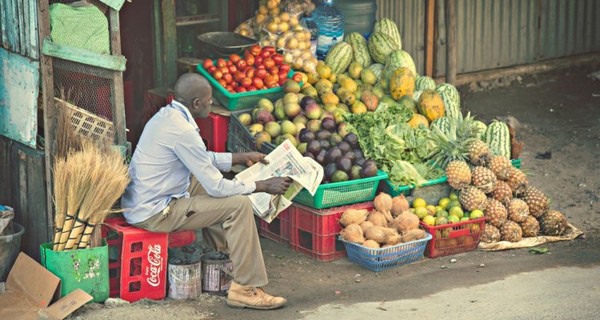Many people in low- and middle-income countries do not get enough nutrients because there are shortages of fruit and vegetables, and supply is one sided and not always affordable. New policies are needed to increase production in a sustainable way, and there is a need for research into how to diversify supply and make it more affordable. This is the conclusion of a group of researchers from Wageningen University & Research (WUR), including Bart de Steenhuijsen Piters, Ilse de Jager and Inge Brouwer, head of the United Nations Food Systems Summit.
The researchers delved into issues surrounding the global fruit and vegetable trade to identify research priorities and suggest possible courses of action for the UN summit, which will take place in autumn of 2021. WUR is an official research partner of the Scientific Group for the Food Systems Summit.

Several problems surrounding food systems in low- and middle-income countries have emerged. It turns out that good seeds and fertilizers are not universally accessible or affordable. There are problems with the preservation and perishability of fruit and vegetables, which result in food waste. Similarly, not every consumer has enough income to choose fruit and vegetables in their diet or knowledge about the health benefits.
Deficiency of vitamins and minerals
There are only enough fruit and vegetables for 55% of the world’s population to meet the recommended amount of 400 grams per day. The difference between countries is huge: in Africa, only 13% of the countries can meet the populations’ needs, compared to 61% in Asia. In low- and middle-income countries, the supply is mainly limited to tomatoes and onions. Vitamin and mineral deficiencies resulting from inadequate fruit and vegetable consumption are among the top five risk factors for poor health worldwide.
Several actions are necessary. Seed and fertilizer can be made more readily available worldwide through fair distribution by companies and with the help of local networks. Additionally, the problem of food waste must also be addressed: 40-50% of all fruit and vegetables produced are lost. This requires better infrastructure, for example.
Problems and solutions differ per food system and per country. Because the problems and solutions differ per food system and per country, the researchers give suggestions for actions using push, pull, and policy mechanisms at macro, meso, and micro levels. Policy actions, such as the creation of neighborhood and school gardens, and healthy food education are also suggested.
Power relations
The researchers also mention the need to recognize and address power differences between the actors in food systems. It is important that they get clarity on the factors that influence food systems and how public and private parties interact. Therefore, according to the researchers, people with a stake in food systems need to come together for debate and to work together in new ways to create fair and healthy food systems.
 For more information:
For more information:
Wageningen University & Research
www.wur.nl
